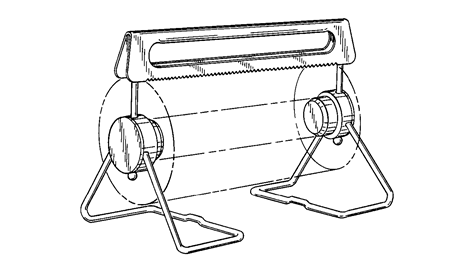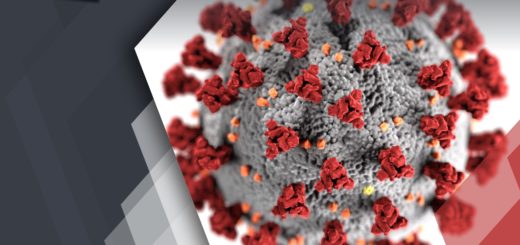Patent Drafting as per 35 U.S.C. § 112: Specifications and Best Practices
A patent application must contain a full and clear description of the invention for which a patent is sought in order to receive a grant. Section 112 of Title 35 of the United States Code prescribes the manner in which the patent description should be submitted. The description is critical for a patent examiner to elucidate the invention to the public. This helps the examiner establish a clear set of boundaries of the patent subject matter, which promotes innovation and raises confidence in the patent process.
This article will discuss all the details about 35 U.S.C. § 112, along with the best practices to avoid a rejection.
Table of Contents
Details about 35 U.S.C. § 112
(a) General
“The specification shall contain a written description of the invention, and of the manner and process of making and using it, in such full, clear, concise, and exact terms as to enable any person skilled in the art to which it pertains, or with which it is most nearly connected, to make and use the same, and shall set forth the best mode contemplated by the inventor or joint inventor of carrying out the invention.”
This section provides a general background for writing the description in the patent application. The specification should contain a clear, written description of the invention, as well as the preferred method contemplated by the inventor on how the invention will be performed or carried out. The term “process” is further defined under the Patent Act as a “process, art, or method, and includes a new use of a known process, machine, manufacture, composition of matter, or material.” As a general rule, the patent drafter drafts the patent claims as broad as possible, to obtain maximum protection as these specifications safeguard the applicant against all expected and unanticipated equivalents of the invention.
(b) Specification Conclusion
“The specification shall conclude with one or more claims particularly pointing out and distinctly claiming the subject matter which the inventor or a joint inventor regards as the invention.”
The patent application drafter must ensure that none of the patent claims is vague or ambiguous, and the specification supports all the terms used in the claims. This section of the specification serves as a glossary in the patent application so the examiner and the public can easily ascertain the meaning of different terms in the patent application. It is advised to use the same name for the element consistently throughout every claim. Any nouns or adjectives must not change through the course of the application.
Once an adjective has been used, it does not need to be repeated with each appearance of the concerned noun. To ensure that this condition is met, it is recommended to utilize the claim’s exact language everywhere in the specification’s body. For instance, if a fastener is used in the machine, depicted by a rivet in an example in the application, you want to claim it as a “fastener” in some or all claims. The descriptive portion of the specification should include “a fastener, such as a rivet.” It is correct to call it “the rivet 10.” It would be incorrect to refer to a certain element as a lever throughout the description and then refer to it as a bar at the end.
In addition, the patent application requires the filing of the drawing to understand the subject matter sought to be patented. The element should be shown in the drawing, mentioned in the claims, and the specification should describe, or at least indicate the presence of the element in the drawing. Figure 1 below shows an example of a patent drawing.

(c) Form
“A claim may be written in an independent or, if the nature of the case admits, in dependent or multiple dependent form.”
The patent application must have at least one claim particularly pointing out and distinctly claiming the subject matter of the invention. The claim may be written in an independent form or a dependent form. Later, we will be extensively covering dependent, independent as well as multiple dependent claims.
You may check our previous articles to know the best practices in claim writing. Here are 10 common patent claim drafting mistakes to avoid.
(d) Reference in Dependent Forms
“Subject to subsection (e), a claim in dependent form shall contain a reference to a claim previously set forth and then specify a further limitation of the subject matter claimed. A claim in dependent form shall be construed to incorporate by reference all the limitations of the claim to which it refers.”
This section can be explained by referring to the dependent claims, their construction, and the best practices for writing dependent claims.
So what is a dependent claim?
A dependent claim incorporates everything in the parent claim by reference and adds certain additional statements, limits, or restrictions. The statements added may be one or more additional elements, a further description or limitation of one or more of the elements of the parent claim, or both. As a result, dependent claims limit the scope of the claim and the extent of an invention’s protection.
The test to determine whether a claim is a dependent one or not should be as follows – it must incorporate all limitations of the claim form on which it is based, or in other words, it cannot be infringed by anything that would also not violate the fundamental claim.
Thus, if Claim 1 has features A, B, and C, and a subsequent Claim 2 replaces feature C with feature D so that Claim 2 has features A, B, and D, then claim 2 could not be a dependent claim on Claim 1. In this case, Claim 2 may only be written in the form of an independent claim.
It is preferable to add an independent claim to maximize claim coverage when an invention includes several features whose inclusions are mutually exclusive (you can include one without having to include the other), rather than attempting to provide coverage solely through a dependent claim.
The main benefit of dependent claims is that they take significantly less time to evaluate, and carry a financial incentive. Furthermore, if any claim is accepted, all dependent claims can be accepted without further scrutiny for novelty or obviousness.
(e) Reference in Multiple Dependent Form
“A claim in multiple dependent form shall contain a reference, in the alternative only, to more than one claim previously set forth and then specify a further limitation of the subject matter claimed. A multiple dependent claim shall not serve as a basis for any other multiple dependent claim. A multiple dependent claim shall be construed to incorporate by reference all the limitations of the particular claim in relation to which it is being considered.”
While writing the multiple dependent claims, the patent drafters must ensure that the claims refer to the other claims on which they are dependent in the alternative way only, such as “or” instead of “and.”
What are multiple dependent claims?
Generally, these are dependent claims that refer back to more than one preceding independent or dependent claim. Multiple dependent claims are equivalent to the number of claims on which they rely, rather than individual claims. For instance, if a claim is dependent on three other claims, then we have a total of three new claims instead of one.
Example:
- Claim 1: A right-hand door with a handle in the center.
- Claim 2: The handle on the door of claim 1 is bolted from the inside.
- Claim 3: The handle on the door in claim 1 or 2 is made of leather.
Here, Claim 1 is an independent claim, Claim 2 is reliant on claim 1, and Claim 3 refers to both claims 1 and 2, resulting in a multiple dependent claim.
Apart from dependent and multiple dependent, there are independent claims. An independent claim is a claim that stands alone and has all of the specifications that are required to define an invention. The first claim is often a stand-alone claim that establishes the tone for the invention’s protection. Independent claims are typically more extensive than dependent claims.
(f) Element in Claim for a Combination
“An element in a claim for a combination may be expressed as a means or step for performing a specified function without the recital of structure, material, or acts in support thereof, and such claim shall be construed to cover the corresponding structure, material, or acts described in the specification and equivalents thereof.”
This means that clauses are proper in combination claims. They are a quick and easy approach to describe a wide range of functions. To invoke that statute, we may use “means” or “step” for performing a specified function like “means for reciprocating the container.” A “means” or “step” clause may theoretically cover one element, 10,000 elements, half of one element or it may cover whatever is described in the specification, plus equivalents. However, since the scope of “means” or “step” may be restricted, as just indicated, it is recommended that the drafter avoids these claim limitations and instead give the element or step an appropriately descriptive name, not including the words “means” or “step.”
Conclusion
The above-mentioned details about 35 U.S.C. § 112 explain how an invention must be described in a patent application. A proper execution of these actions and approaches can help garner a desirable outcome for the applicant. Drafting a patent application is a daunting task. Hence, it is advisable to take the help of an IP firm that can assist in getting the grant fairly, quickly, and with less effort.
Sagacious IP has built a reputation for itself with its dedicated IP services. With four delivery centers and offices in six countries, it has completed more than 25,000 projects worldwide. Furthermore, the company has established an amazing clientele, some of the largest companies in the world. Refer to this link to know more about our Patent Drafting plans that are cost effective and result driven.
– Yojit Bhugra (Engineering Drafting) and the Editorial Team




